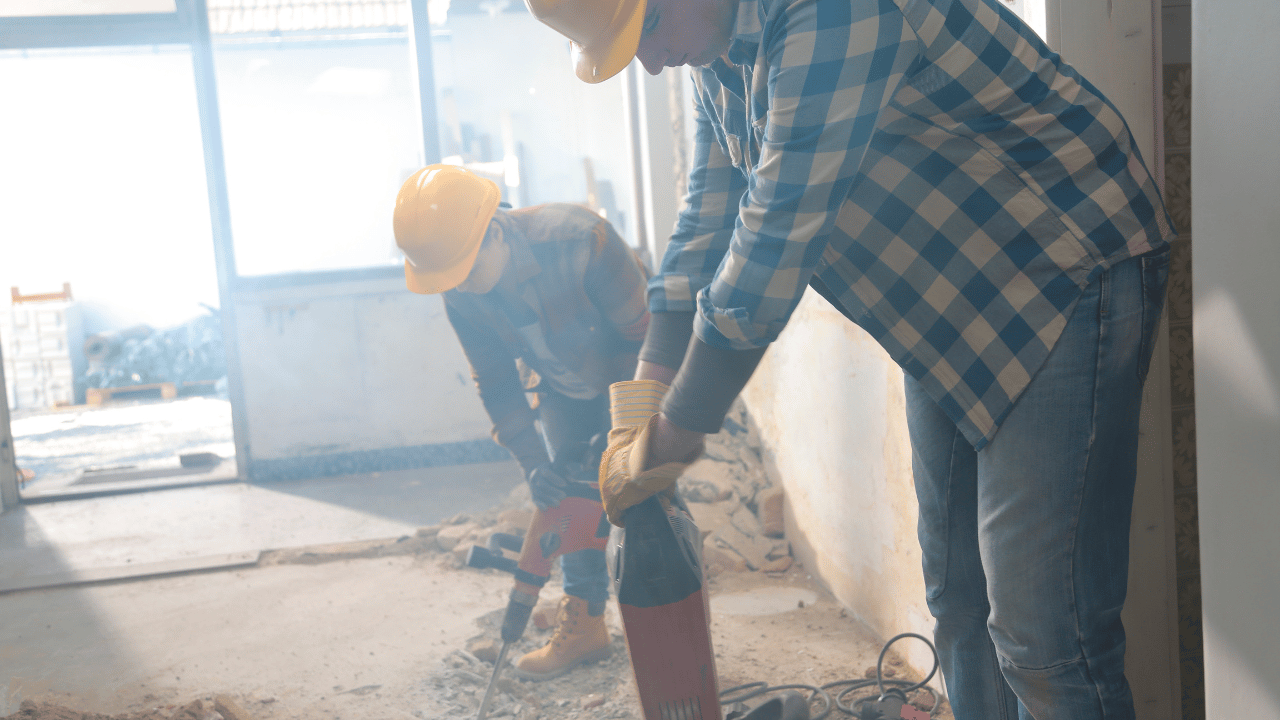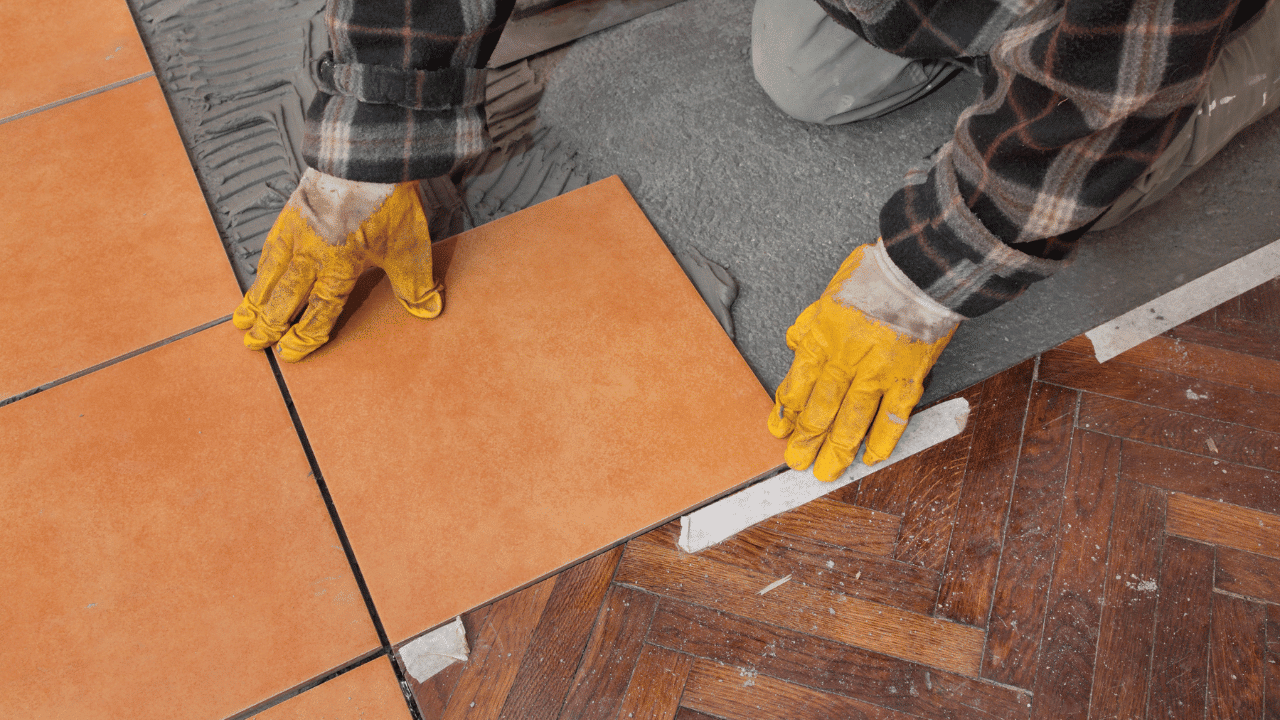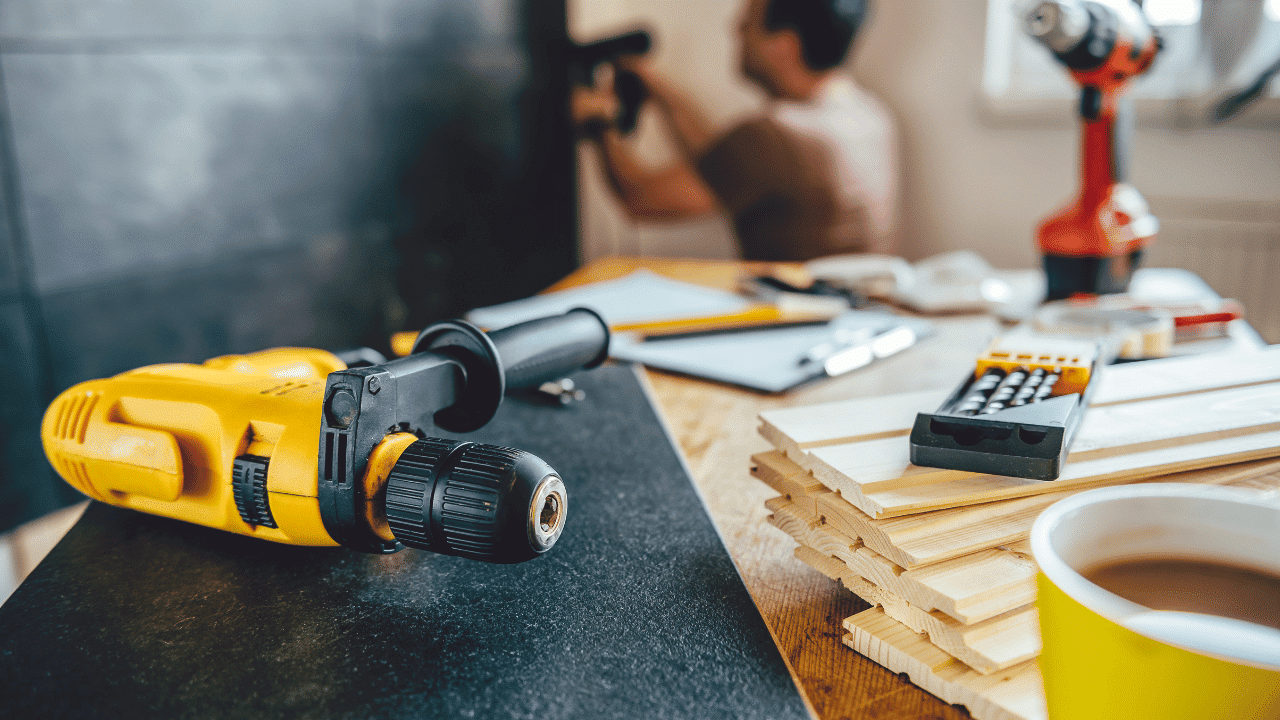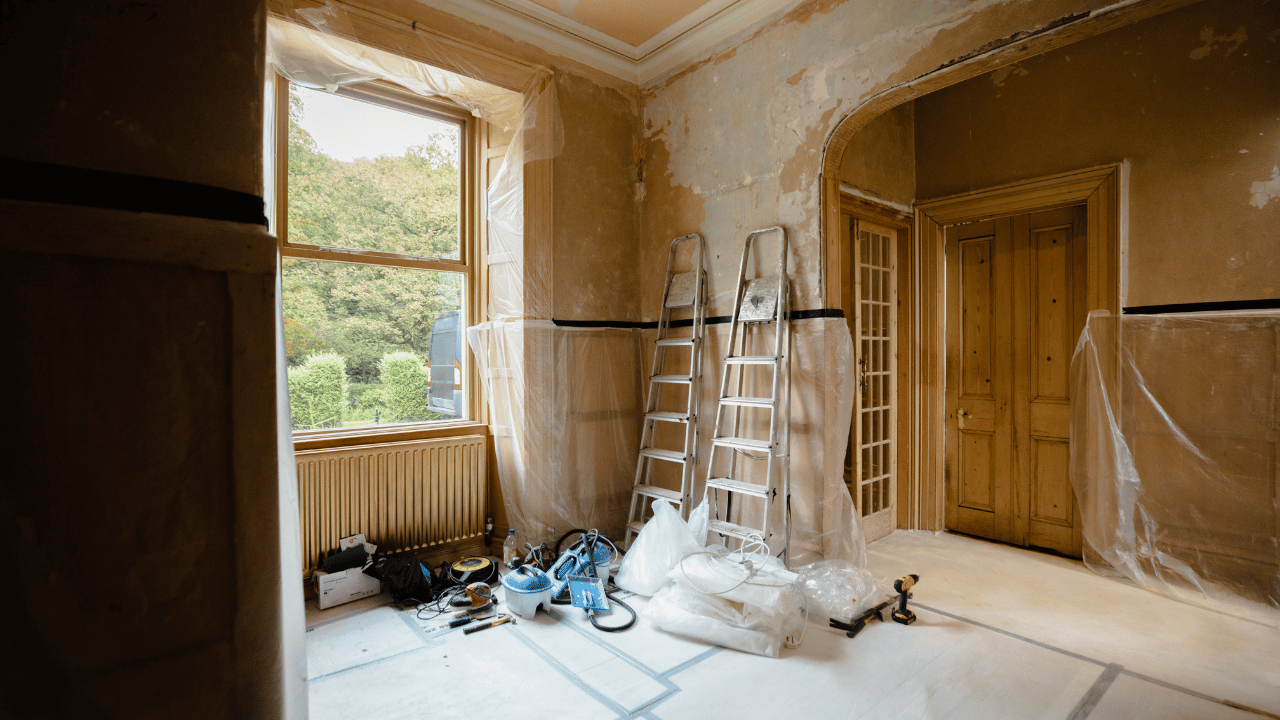Last Updated on September 11, 2023 by Pro Handyman Australia – Editorial Team
For homeowners, the journey of maintaining a property is continuous, involving regular preventative maintenance and the integration of energy-efficient systems. But occasionally, the enticement of home improvement beckons! This can range from simple desires, such as:
- Tweaking the layout of your home for a fresh ambiance.
- Revamping a room for a specific purpose.
- Competitively positioning your home in the market by enhancing its amenities.
- Crafting an open-air haven with an advanced outdoor kitchen or an enlarged deck, maybe crowned with a charming pagoda.
- Or perhaps, refreshing your home with minor modifications, like updating interior fixtures to give doors and cabinets a modern touch.
Other needs can be more immediate. For instance, a shift in family dynamics, with multiple generations cohabitating, might necessitate the introduction of an extra bathroom. Alternatively, a garage might be transformed into a space for elder relatives, or a loft might need enclosing for returning young adults.
Home Transformation and Lifestyle Changes
Our homes mirror our life stages and circumstances. A notable shift in this dynamic was experienced in March 2020 when homes transitioned into multi-functional sanctuaries—spaces for work, leisure, education, and more. This unprecedented change triggered a surge in renovations, furniture purchases, and even pool installations as individuals across the globe sought solace and functionality within their living spaces.
With limited outdoor entertainment avenues, many homeowners redirected their resources. As one home loan specialist put it, there was a discernible shift in disposable income from areas like travel to home enhancements.
Exploring Worthwhile Home Projects
There’s a myriad of motivations behind home projects. Some homeowners venture into DIY, while others seek the expertise of professional contractors. In gauging project popularity, the 2020 True Cost Report revealed top home improvement preferences based on cost and household participation:
- Interior Painting: Averaging at $2,007, embraced by 35% of households.
- Bathroom Overhauls: Standing at around $13,401, undertaken by 31% of households.
- Flooring Updates: Costing approximately $4,680, chosen by 26% of households.
- Landscape Enhancements: Priced at $2,389, opted by 24% of households.
Although these might not promise the highest return on investment, they deliver significant visual appeal without a hefty price tag. Affordable projects that amplify the aesthetics of a home are often labeled as ‘visual-value’ endeavors due to their transformative yet cost-effective nature.
Ultimately, while financial returns are advantageous, the satisfaction derived from a fresh coat of paint or enhancing a home’s exterior charm can be immensely gratifying. Thus, such endeavors often emerge as the perfect projects at just the right moments.

When considering home upgrades, it’s essential to discern which projects will elevate the value of your property. While some enhancements seem luxurious, they might not provide the expected return on investment (ROI). For instance, transforming a bathroom into a spa-like retreat might seem like a lavish choice, but its costs may not be fully recouped upon selling.
In contrast, fundamental improvements like replacing gutters or addressing a leaky roof, although less glamorous, often yield a more significant boost to a home’s value. These essential fixes enhance the property’s integrity and functionality, making them valuable to potential buyers.
Capitalizing on Rising Housing Prices with Smart Investments
With the current upward trajectory of housing prices, there’s never been a better time to focus on boosting your home’s ROI. Investing wisely in your property’s infrastructure can further amplify its market value. Homeowners must, therefore, ensure their chosen renovations genuinely enhance the property’s worth and aren’t merely cosmetic upgrades.
What is Home Improvement ROI?

Home Improvement ROI (Return on Investment) quantifies the financial benefit derived from a home renovation project. Essentially, it measures the increase in property value resulting from the improvement efforts. Think of it as gauging the monetary value added to your home due to renovations.
Contrary to popular belief, fostered by TV shows like Fix it or Flip it, not every home improvement guarantees a 100% return on investment. In reality, the majority of home renovations might not bring as lucrative returns as shown on TV.
The Mathematical Approach to Estimating ROI
To calculate the estimated ROI for a home improvement project, one can use the following formula:
Home Improvement ROI=(Net Gain from Home ImprovementCost of Home Improvement)�100
Here’s a practical application of the formula:
Assuming a Home Improvement cost of $10,000 leads to a Net Gain of $15,000:
Difference (or Profit) = $15,000 (Net Gain) – $10,000 (Improvement Cost) = $5,000
Using the formula:
ROI=(DifferenceCost of Home Improvement)�100 \text{ROI} = \left( \frac{$5,000}{$10,000} \right) x 100 = 50%
So, in this scenario, the renovation brought about a 50% return on the initial investment. This is merely an estimate; the actual returns might differ due to various influencing factors.
Factors Influencing Home Renovation ROI
The return on investment from a home improvement project is influenced by:
- The prevailing real estate market
- The geographical location of the property
- The type and scale of the project
- The timing of the renovation
Given these factors, it’s evident that while the formula provides a guideline, there’s no exact science to predict ROI for home improvements perfectly.
Expert Insight on Appraising Home Value
The definitive method to ascertain home value is through an appraisal — a specialized procedure where a real estate appraiser determines the fair market value of a property. There exists a distinctive appraisal variant termed “as-completed appraisal”. Here, an appraiser evaluates the projected renovation plans against the current property value to estimate the added value upon completion.
Though beneficial, as-completed appraisals come at a cost. Typically, they’re conducted when seeking a “renovation loan”, where the loan amount is based on the anticipated equity of the renovated property. One significant advantage of this financing approach is the clarity on the value addition from a renovation.
In scenarios where an “as-completed appraisal” isn’t feasible, homeowners can employ the 70% rule as a general guideline to evaluate the potential ROI of their renovation projects.
Analyzing Top Home Improvement Projects for 2023 Based on ROI

Annually, renowned industry platforms meticulously assess the costs and subsequent resale values of principal home renovations. A recent deep dive into the “2023 Cost vs. Value Report” revealed intriguing insights into the top remodeling endeavors. This analysis, which spans 150 markets in the U.S., is reinforced with ROI data from authoritative sources such as Investopedia and Zillow. For homeowners aiming to amplify their financial returns, understanding which projects offer the most compelling ROI is crucial.
1. HVAC (Electrification)
- Investment Details:
- Average Cost: $17,747
- Average Resale Value: $18,366
- Financial Insights: The potential return on this investment is substantial, with an average ROI of 103%. This means that homeowners can expect a slight profit over their initial expenditure when they decide to sell their homes after installing an electrified HVAC system.
2. Garage Door Replacement
- Investment Details:
- Average Cost: $4,302
- Average Resale Value: $4,418
- Financial Insights: Upgrading the garage door is another project that seems to pay for itself, boasting an impressive average ROI of 103%. Not only does it enhance the home’s curb appeal, but it also translates into tangible financial gains upon resale.
3. House Siding with Stone Veneer Replacement
- Investment Details:
- Average Cost: $10,925
- Average Resale Value: $11,177
- Financial Insights: Swapping traditional house siding with a stone veneer alternative yields a lucrative average ROI of 102%. Such a modification can dramatically transform the property’s aesthetic appeal, making it a magnet for potential buyers and ensuring homeowners recoup their investment, plus a little extra.
4. Midrange Basic Kitchen Remodel
- Investment Insights:
- Average Cost: $26,790
- Average Resale Value: $22,963
- Financial Perspective: For those considering a standard kitchen overhaul, the average potential ROI stands at 86%. This suggests that while homeowners can significantly enhance their kitchen’s functionality and aesthetics, they might retrieve a sizable portion, though not the entirety, of their initial expenditure upon resale.
5. Vinyl Window Replacement
- Investment Insights:
- Average Cost: $20,091
- Average Resale Value: $13,766
- Financial Perspective: Opting for vinyl windows offers a return averaging 69%. Beyond the potential energy savings for homeowners, vinyl windows can modernize a property’s appearance. However, the investment might not be fully recouped in resale.
6. Midrange Bath Remodel
- Investment Insights:
- Average Cost: $24,606
- Average Resale Value: $16,413
- Financial Perspective: Undertaking a mid-tier bathroom renovation might yield an ROI of about 67%. While it adds comfort and possibly a touch of luxury, homeowners should be prepared for a partial return on their investment.
7. Wood Window Replacement
- Investment Insights:
- Average Cost: $24,376
- Average Resale Value: $14,912
- Financial Perspective: Wooden windows, while aesthetically pleasing and insulative, bring an average ROI of 61%. Their charm and warmth might not always translate into a high financial return, but they do offer other intangible benefits.
8. Entry Door Replacement (Steel Door)
- Investment Insights:
- Average Cost: $2,214
- Average Resale Value: $2,235
- Financial Perspective: Swapping out an old entry door for a sturdy steel version can almost pay for itself, boasting an average ROI of 101%. Such a change enhances security and potentially the property’s curb appeal.
9. Vinyl Siding Replacement
- Investment Insights:
- Average Cost: $16,348
- Average Resale Value: $15,485
- Financial Perspective: Replacing worn-out sidings with vinyl alternatives can offer homeowners an impressive ROI of 95%. It’s a relatively cost-effective way to revitalize a home’s exterior appearance.
10. Fiber-Cement Siding Replacement
- Investment Insights:
- Average Cost: $19,361
- Average Resale Value: $17,129
- Financial Perspective: Choosing fiber-cement for siding replacement yields an 89% return on investment on average. It’s durable, aesthetically pleasing, and can enhance a property’s value significantly.
Maximizing Your Return on Home Improvements

Key Rooms that Offer the Best ROI When it comes to homebuying, potential buyers often prioritize the kitchen and bathroom spaces. Therefore, investing in these rooms, although potentially expensive, tends to offer the best return on investment when selling. Expanding the living space, like adding a family room or master suite, is another avenue that can increase a home’s value, as larger homes generally attract higher prices.
Potential Pitfalls in Home Investments On the contrary, not all investments guarantee high returns. For instance, while swimming pools might seem appealing, they seldom recoup their initial cost. Many potential buyers perceive them as high maintenance and may not be inclined to pay extra for them. Similarly, home offices might not provide a significant return, since not every buyer may prioritize a workspace at home.
The Value of Minor Kitchen Upgrades It’s crucial to understand that a higher investment doesn’t necessarily translate to a higher return. Sometimes, minor renovations can have a substantial impact on the home’s value. For example, giving your kitchen a refresh—like repainting, refinishing surfaces, and upgrading appliances—might offer a better return than a complete overhaul. The essence is to spend wisely, focusing on design and product selection, which can transform a space without a hefty price tag.
Personal Preferences vs. Universal Appeal Although personalizing your home might seem appealing, it’s essential to consider the resale factor. Overly unique or specific modifications might deter potential buyers. For instance, while a room shaped like a cat might resonate with you, finding a buyer with the same inclination can be challenging.
When planning an addition or modification, it’s imperative to maintain the original architectural integrity, especially if the home belongs to a distinct style, like Craftsman. Any modifications should seamlessly integrate with the existing design, ensuring it complements the home’s overall aesthetics.
Neutral Choices Stand the Test of Time When undertaking smaller projects, always lean towards timeless and neutral choices. For instance, while choosing kitchen cabinets or countertops, it’s wise to opt for classic colors and designs. An overly personalized or unconventional choice, like a purple kitchen, might not appeal to a broader audience, making it challenging to recoup your investment when selling. It’s vital to strike a balance between personal preferences and choices that would have universal appeal in the real estate market.
Factors Influencing Home Resale Value and Return on Investment

1. The Influence of Neighborhood When considering any major home improvement, understanding the dynamics of your neighborhood can be instrumental in gauging the potential return on investment. For instance, remodeling a kitchen in a home situated in a high-end school district, surrounded by more valuable properties, might be a prudent choice. This ensures that any home upgrades won’t exceed the typical market value in the area. Making improvements that dramatically elevate the property value beyond the neighborhood average can be a risky move, as it might deter potential buyers and hinder the likelihood of recouping the investment.
2. Regional Variations to Consider The region in which a property is located plays a significant role in remodeling decisions. For instance, labor costs can fluctuate between regions, making certain renovations more viable in some places than others. Moreover, local preferences, such as the popularity of fireplaces in colder regions or the value of decks in warmer climates, can influence which renovations are worth the investment. Being attuned to these regional trends and preferences is essential when deciding on the scope and nature of home improvements.
3. Real Estate Market Dynamics Regional differences aside, the broader real estate market in your area can also determine the value of your renovations. In areas where housing is in high demand, buyers may be more willing to pay a premium for top-tier improvements. However, this doesn’t mean that one should splurge on every renovation, even in a booming market. Over-renovating, or investing too heavily in modifications without ensuring a potential return, can lead to financial setbacks. Even in hot markets, it’s advisable to strategically plan home improvements, considering both immediate desires and long-term financial implications.

4. Considering the Timeline The duration of your stay in your renovated home plays a critical role in determining whether you’ll recoup your investment costs. Historically, with home prices increasing by approximately 5% annually, the investment in renovations is likely to blend into the natural appreciation of the property over time. The longer you reside in your revamped space, the better the chances of capitalizing on this value increase. However, it’s essential to approach this with caution; there’s no guarantee that property values will always rise. Furthermore, tastes and preferences change over time. The contemporary trend of open-concept living spaces might not be the preference a decade down the line. This is particularly true for kitchens and bathrooms, which can quickly look outdated. Remember those once-popular avocado-green appliances?
5. Being Aware of Hidden Costs Venturing into a home renovation with a strict budget? Brace yourself for unforeseen expenses. These can range from project extensions causing increased costs, additional expert consultation fees, or even the overheads associated with financing options like home-equity loans. Furthermore, enhancing your home’s value can also lead to a hike in property taxes upon reassessment. It’s crucial to factor in these potential hidden costs when budgeting for a renovation.
While home improvements can enhance living experiences, experts often advise homeowners to be cautious about viewing renovations purely as financial investments. It’s essential to strike a balance between what you desire and what you can afford. For instance, there’s the story of a couple who invested in a lavish home office for their early-retired husband. Though they didn’t recoup their costs when they relocated, the satisfaction derived from the renovation was invaluable to them.
Evaluating Return on Investment for Projects
It’s worth noting that evaluating the return on investment for home renovations isn’t a straightforward task. Since the mid-1980s, renowned magazines have been conducting annual analyses on cost versus value for residential remodeling projects across the country. By collaborating with real estate professionals, they gauge the costs and the potential increase in the property’s selling price. Such reports offer invaluable insights and serve as a benchmark for homeowners. However, it’s crucial to understand that every home and renovation is unique, and the actual return might vary on a case-by-case basis.
Strategizing Home Improvement Investments
From Past Trends to Modern Desires The eighties were a distinctive era in home decor. Who can forget the ubiquitous wallpaper borders, the lavish window treatments with their grandiose swags, or the mirrored walls aimed at making spaces seem more expansive? Coupled with the period’s Formica countertops and popcorn ceilings, the design trends of that decade were, in hindsight, rather unique.
Fast forward to today, and homeowners have evolved into creatures of comfort and luxury. Our outdoor spaces are expected to mirror the sophistication of our indoor domains. Picture outdoor lounging areas adorned with flatscreen TVs perched above grand stone fireplaces, accompanied by brick pizza ovens, expansive decks, and versatile gazebos. Meanwhile, within the walls, modern desires lean towards amenities like wet bars, garden tubs, and an expansive family room centerpiece: a state-of-the-art entertainment system with impeccable surround sound.
Balancing Personal Desires with Practicality When considering where to start, it’s essential to weigh personal preferences against practical considerations. If you envision spending a lifetime in your current abode, then prioritize improvements that align with your unique tastes and desires. Perhaps you’ve always dreamt of a dedicated fitness studio or a serene backyard lap pool.
However, if you anticipate moving in the foreseeable future, the focus might shift towards projects that promise a higher return on investment. In this scenario, it’s crucial to find a balance—making upgrades that appeal to a broader audience without entirely sacrificing your personal tastes.
Conclusion

When navigating the intricate world of home renovations, homeowners are often caught in the conundrum of balancing personal aesthetics with tangible financial gains. Our exploration into the top 10 home renovations with the best return on investment offers a beacon of clarity. From enhancing a property’s curb appeal with strategic exterior updates to making substantial changes in crucial areas like the kitchen and bathroom, it’s evident that not all renovations are created equal. Some projects might elevate daily living experiences while promising optimal financial returns upon resale. Others, while aesthetically significant, might not yield the same financial windfall. Ultimately, informed choices, driven by.
